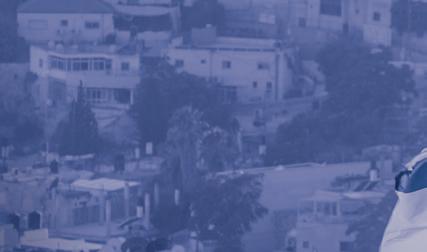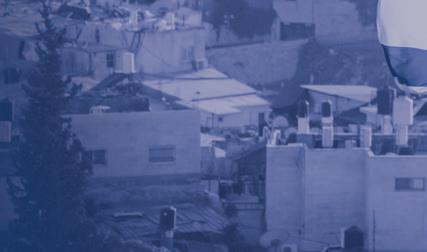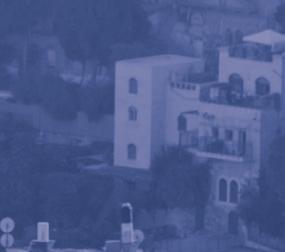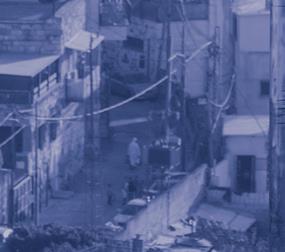










With the recent passing of singer and entertainer Tina Turner I started to think about how people rise from adversity. How did some Holocaust survivors manage to continue their lives after enduring unimaginable horror?
One of the first researchers into this area was, himself, a Holocaust survivor. Viktor Frankl became a psychiatrist who developed logo therapy, a psychotherapy that describes a search for life’s meaning as the central human motivational force.
Many people face adverse events or undergo a personal crisis that results in suffering. Most people, especially those in the first world, do not know how to deal with suffering.
Just like we need to accept that change is a part of life, so too is suffering. There is no formula on how to manage it, rather through our personal journeys and value systems we can create individual mechanisms to help us through tough times.
Frankl said that if a person cannot find meaning in their suffering they will
We are so pleased that this broad-based Judaica quiz, compiled by the erudite and engaging Rabbi David Freedman, has garnered such a wide following since its inception. Thank you to so many readers for your ongoing positive feedback. This month within this Judaica quiz we can explore so many facets of the Jewish world – from all-things-Israel to global Jewish initiatives to politics and prayer.
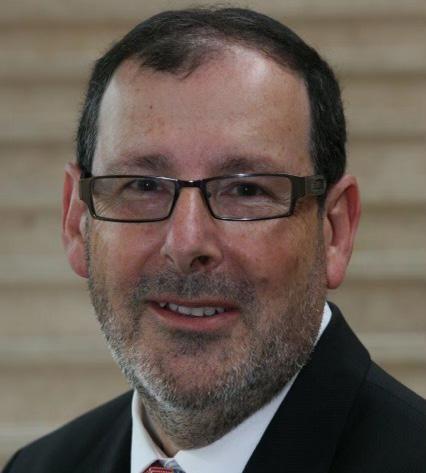
It is so much fun to draw on the collective knowledge of family and friends around the Shabbat table to answer historical questions across the centuries, along with testing our geography and educational insights. We can also answer – or attempt to answer - questions posed delving into the wisdom of our sages too. Of course, all is offered via a sacred Jewish lens and all are original questions prepared just for you and your nearest and dearest.
1. What colour was the Yam Suf?
2. Which building was located on HaYarkon Street, Tel Aviv until June 2018?
3. Donald Trump’s granddaughter recently celebrated her Bat Mitzvah –what is her first name?
4. How long after the capture of Beer Sheva (October 31, 1917) by the British and Anzac servicemen did Lord Balfour send the letter (which became known as the Balfour Declaration) to Lord Rothschild?
tend to despair. However, if meaning is found, they can turn their tragedies into achievement, as a way of overcoming. He also believed that every day we must ask ourselves who we are and who we want to be in order to become
the best version of ourselves. German philosopher Frederich Nietzsche said: “He, who has a why to live for, can bear almost any how”. The answer to “why” to live is “hope”. As a concept, hope helps people better cope with difficult
5. Julian Leeser MP is the Federal Member for which NSW constituency?
6. Which prayer is known in Hebrew as Birkat Hamazon?
7. In which year was the first kibbutz, Degania Alef, founded:
a) 1900
b) 1905 or
c) 1910?
8. Which famous Chassidic Rebbe said, “If you won't be better tomorrow than you were today, then what do you need tomorrow for?”
But I had no choice. The world wouldn't let us keep them”?
10. The Machzor Vitry is a medieval prayer book that incorporates legal rulings, composed by Rabbi Simcha of Vitry, a French scholar and disciple of Rashi. In which century was it composed?
11. Which former record producer and convicted murderer, born in 1939 to a Russian/American Jewish family died in prison in 2021 from Covid 19?
12. Which three biblical books are ascribed to King Solomon?
or stressful times and to adapt better to adversity. With hope, they don’t just wish for something good to happen. They have a concrete plan to make it happen.
We can use the following strategies to give us hope. First, we need to establish a clear, achievable goal. In turn, that gives us the ability to act on or do something productive.
Next, we need to harness our uncertainty. In many cases, when we are uncertain about an outcome, we become anxious and lose hope. In fact, for hope to enter the equation, we need to be able to perceive the possibility of success.
Hopeful people seek out positive messages and images. They spend less or no time countenancing the negative, for doing so can become a self-fulfilling prophecy.
We can stay hopeful by connecting with others who hold us accountable and remind us of why our struggles matter.
Hope also requires trust. Cultivating and sustaining hope requires us to gather evidence from our own lives and the world at large and use that to guide our plans, pathways and actions.

Anne-Marie Elias is a psychologist in clinical practice for 25 years.

– how many years between the two operations?
17. Isaac Herzog is the 11th President of Israel. Complete the following sentence: “He is the first president to be born in Israel after ...”
18. Which two Israeli politicians founded Likud in 1973?
19. Jerry Springer, US TV personality who died in April 2023, was raised in New York –but born in London to German Jews who had escaped the Holocaust. In which unlikely place was he born during the Blitz?
20.In 1946 which Jewish educational institution adopted Torah Umadda (Torah and Knowledge) as its slogan?
21. Which town, adjacent to Newcastle upon Tyne, in the northeast of England, houses a world famous Yeshiva?
22.What is the connection between Boris Volynov and Ilan Ramon?
23. Which city in Israel is often known as the ‘Capital of the Valley?
a) Afula
b) Eilat
a) The Baal Shem Tov
b) Rav Nachman of Breslov
c) The Lubavitcher Rebbe, Menachem Mendel Schneerson?
9. During the exodus of Soviet Jews from the Soviet Union, who made the following statement speaking in Russian while visiting Australia: “I never wanted them to leave. They were our most educated people. We had invested so much in them. We needed them. I wanted them to stay. We lost so much when they left us.
13. Who founded the Bais Ya'akov educational movement for girls and brought about a revolution in the status of women in Orthodox Judaism?
14. Avraham Shabsi Hakohen Friedman is a well-known Israeli performer – by what name is he better known?
15. Bank Hapoalim is the second oldest bank in Israel. In which decade was it founded?
16. Operation Moses and Operation Solomon brought Ethiopian Jews to Israel
c) Hebron
d) Kfar Saba
24.According to the Talmud who composed the Book of Job?
25. Which popes visited Israel in
a) 1964
b) 2000
c) 2009
d) 2014?
Good luck. Enjoy. Hopefully, learn something new about your Jewish heritage and tradition.
RABBI
a life-changing centre for vulnerable Israelis.

Last month, UIA Australia held the official ribbon-cutting ceremony of a social club located in the Amigour home in Ashkelon, in southern Israel. The centre provides housing for vulnerable elderly citizens. They include Holocaust survivors and new immigrants.
Amigour is Israel’s leading operator of public and sheltered housing for vulnerable senior citizens. Their need is a national priority supported by Keren Hayesod-UIA, the Israeli Government and The Jewish Agency for Israel.
The social club was built from funds raised by UIA through its inaugural crowdfunding Giving Day in November 2020.

The campaign, which raised $2.4 million, broke Charidy's record for generating the most money and having the highest number of donors (over 2,500) for a Jewish organisation in Australia.
The campaign reached its initial target of $1.5 million within four hours of starting and had the support of about 250 volunteers around Australia. All funds raised locally were matched by the Israeli Government.
UIA was pleased to facilitate the official opening, inviting participants from its Major Donor Mission who saw first-hand the impact of their support. Many of these Mission participants matched the funds raised by UIA for Amigour. They were honoured with plaques at the facility, cementing the final steps of a successful fundraising drive, which culminated in
Amigour’s CEO Erez Shani, who attended the ribbon-cutting ceremony, said there are currently 597 elderly men and women living there, more than a third of whom are Holocaust survivors.
Besides receiving housing, Amigour residents participate in Hebrew and English language classes, exercise classes and lectures on health and nutrition. They attend handicrafts’ workshops, choral groups, computer classes and more. These provide intellectual and cultural stimulation, along with social interaction. Trips around Israel, visits to museums and the theatre, and holiday celebrations offer further opportunities for personal enrichment. On-site staff include social workers, diversional therapists and caregivers who ensure residents’ needs are met.
UIA Australia president Esther Frenkiel OAM cut the ribbon at the Amigour social club opening alongside Victorian president Peter Horovitz and immediate past president Hayley Southwick.
Mrs Frenkiel said it was “wonderful for the Australian community to see the great result of their continuing generosity. It was an absolute privilege to be there and appreciate the wonderful work of KH-UIA.”

Amigour provides 6,000 apartments in 57 homes for some 7,500 residents, but the need is constantly growing, with about 27,000 elderly still lacking proper housing in Israel.
Follow UIA on Facebook and Instagram (@uiaaus) for updates on Amigour and upcoming campaigns and events.

For a week, during the school holidays, youngsters will be able to watch their favourite books come to life.

Sydney Jewish Museum is about to introduce a new way for children to discover, create and play.

It involves hands-on activities and storytelling experiences, exploring Jewish life, traditions and culture.

With a rich collection of artefacts and stories that delve into the rich tapestry of Jewish life, the museum is now welcoming the opportunity to share these stories with the younger generation.

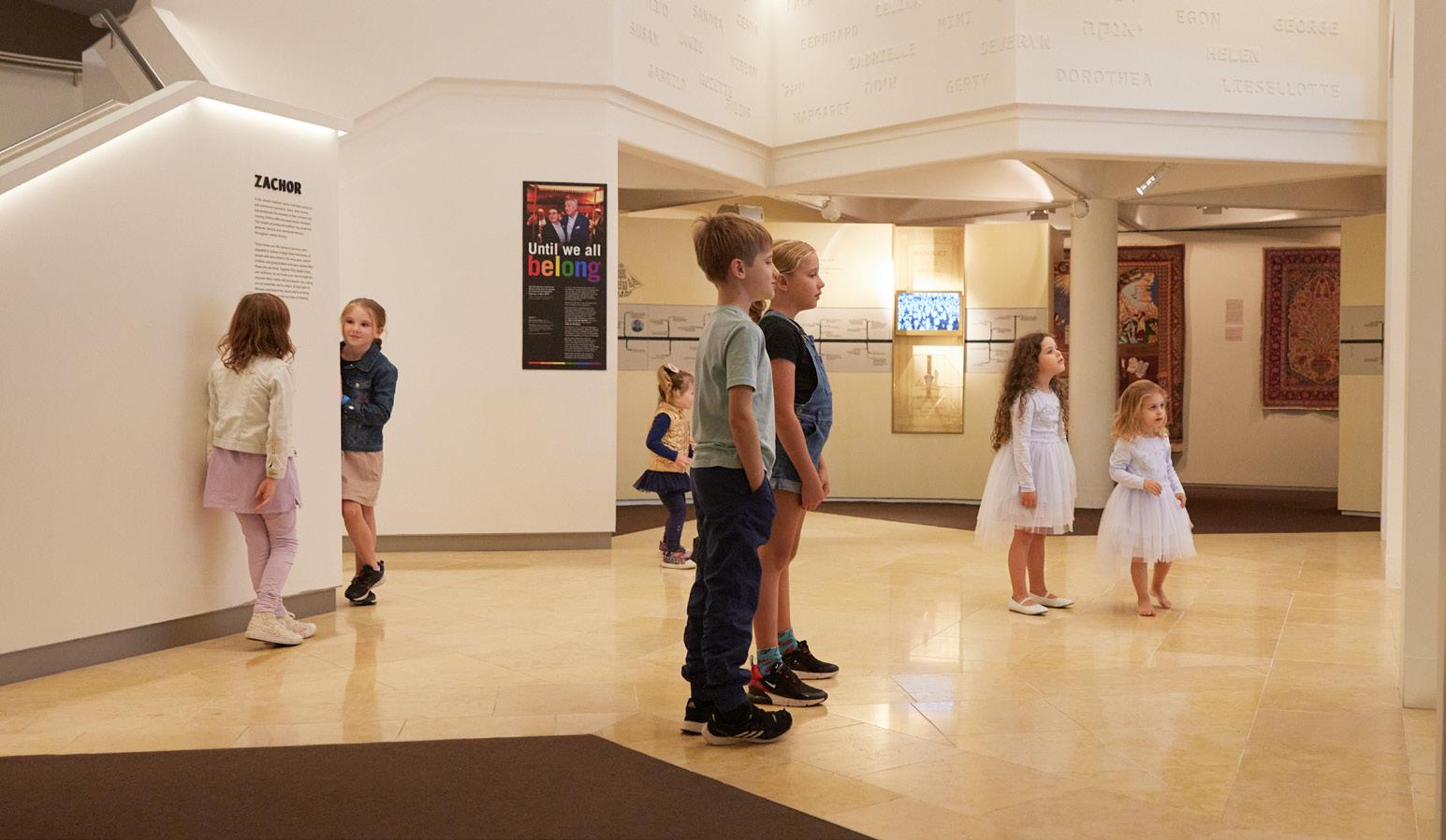
Launching in the July school holidays, the museum will welcome young learners of all faiths and backgrounds to participate in activities and workshops.
The experiences are designed for children aged from three to 12.

Families will be able to drop into a free, interactive kids’ space at any time for reading activities, arts and crafts, or book a series of creative workshops, based on their favourite stories.
The three workshops on offer will see children have the opportunity to learn about the meaning of given names, create an illustrated record of their family history and explore important concepts, like kindness.
The museum has forged a special partnership with PJ Library and Shalom to help bring Jewish storybooks to life.
For more information about what’s on for families in July, visit www.sydneyjewishmuseum.com.au


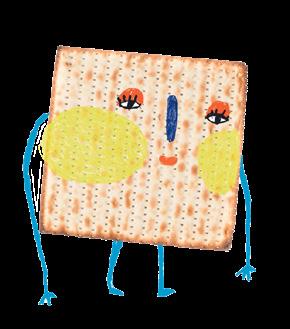
With hands-on activities and storytelling experiences exploring Jewish life, traditions and culture, there’s something for children of all ages in the July school holidays. To learn more

There are few more celebrated milestones in life than marriage. It offers the opportunity to deeply connect with another person, build a home, nurture future generations and leave a lasting legacy. There is a most intriguing source in the Torah about marriage involving Abraham's negotiation for a burial site for his late wife, Sarah. While seemingly unrelated, this narrative actually holds valuable insights into building a meaningful marriage. Four key lessons emerge: context, care, consequence and continuity.
Firstly, we must look at the context in which these lessons come to light. The story takes place at the end of a relationship, in an unconventional setting far from the happiness of a chupa (wedding canopy). This highlights the fact that marriage is not just about the wedding day but is an ongoing journey together. Throughout the years, spouses witness each other in all kinds of situations, from public events to intimate moments. Marriage is lived out in unexpected circumstances and it is in these spaces that the true bond between each other is tested and strengthened.
The second lesson focuses on care. Despite the passing of his wife, Abraham
The Talmud is the main text of rabbinic Judaism and one of the most important sources of Jewish law. Divided into 63 tractates, it deals with thousands of scenarios and records the discussions of ancient rabbis talking about the minutiae of Jewish daily living. The laws that come out of these discussions form the backbone of Jewish practice.
The study of the Talmud is notoriously difficult, as it has more than 2,000 doublesided folios. The breadth of subject matter discussed is vast. To get through these texts can take a lifetime.
However, in an effort to change the narrow focus on certain tractates of Talmud, in 1923 a Polish rabbi, Meir Shapiro, proposed that Jewish people should study one double-sided page of Talmud each day. This method, known as “Daf Yomi” (daily page), helped people become familiar with the entire Talmud, especially some of the more obscure tractates. Using this method, it takes a person seven and a half years to complete the entire Talmud.
This method of studying Talmud has taken off like wildfire. In 2023, we are working through the 14th Daf Yomi cycle, which has three more years to run. At the start of 2020, when the 14th cycle began, I threw my hat in the ring. Each day I sit with my Talmud and work my way through a difficult page. It is a grounding experience, one that brings
displayed extraordinary compassion. He went above and beyond to ensure that Sarah received a dignified burial and respect. This selfless act teaches us the importance of doing what is right for our partners, without expecting anything in return. Care and giving should be at the heart of every marriage. When each partner puts the other first, a strong foundation of love and support is created.
The third lesson revolves around consequence. In the negotiation for the burial site, Abraham willingly paid a
significant sum, far exceeding the value of the land. The result was a win-win situation, leaving all parties satisfied. This serves as a reminder that in relationships, particularly in marriage, it is so important to seek outcomes that benefit everyone involved. By considering the consequences of our actions and striving for a win-win outcome, we contribute to a harmonious and fulfilling partnership.
Lastly, the lesson of continuity emerges. The narrative involves a plot of land that would outlast both Abraham and Sarah, benefiting future generations
to come. This represents the legacy that marriages should strive to create. A successful marriage extends far beyond the lifetimes of the individuals involved, leaving a lasting impact on the world. Couples embarking on the journey of marriage should cherish the significance of their bond and the potential for their love to resonate through generations.
Buying a burial site, which serves as the basis for the tradition of using a ring in marriage, encapsulates these profound lessons. Whether it is understanding the context in which marriage thrives, embodying care and compassion, seeking win-win outcomes or considering the enduring legacy of the union, these elements contribute to a meaningful and successful marriage.
Like the endless circle of a ring, symbolising eternal commitment, when two soulmates love, respect and embody these principles, their marriage has the potential to bring lasting meaning and fulfilment, just as it did for Abraham and Sarah.
Rabbi Dr Benji Levy is a co-founder of the philanthropic advisory Israel Impact Partners, Keshev mental health center and an Al summarising start-up called Tanna. He is the former CEO of Mosaic United and Dean of Moriah College, and he teaches globally in person and online at @RabbiBenji. For more information visit www.rabbibenji.org
me much joy, as I delve into ancient concepts that are still practised.
I love being part of the biggest global Jewish book club, where each day, no matter where they are in the world, Jewish people study the same page. In recent years, podcasts and study aids have been established to help this growing phenomenon. The study is solitary, but I don’t feel alone. Like me, a small group of Australian women are breaking their teeth understanding these ancient texts. I have friends in Melbourne who study with me, and I know I am part of the global study group. Women help each other with Daf Yomi on WhatsApp, Facebook and Instagram. We share tips, study aids and encourage each other.
Interestingly, while the Talmud has much to say about Jewish women, the discussion largely excludes their voices. Historically, Talmud study, with all its rigours, was deemed to be the domain of Jewish men. This is slowly changing as Jewish women become more educated and add their voices to discussions.
Jewish women may not have had their voices in the Talmud, but in the 21st century they are gaining the skills and confidence to add their voices in the most important and meaningful ways possible: through understanding the tradition’s foundational texts.
How many common words of 5 or more letters can you spell using the letters in the hive? Every answer must use the centre letter at least once. Letters June be reused in a word. At least one Jewish word will use all 7 letters.

Proper names and hyphenated words are not allowed. Score 1 point for each answer and 3 points for a Jewish word that uses all 7 letters.
Rating: 20 = Good, 24 = Excellent and 27 = Genius
Yoni Glatt has published more than 1,000 crossword puzzles worldwide, from the LA Times and Boston Globe to The Jerusalem Post. He has also published two Jewish puzzle books: "Kosher Crosswords" and the sequel "More Kosher Crosswords and Word Games".


The recent 5th Jewish artistic showcase at B’nai B’rith Centre brought together more than 50 contributing artists, engaging, entertaining and inspiring the community.
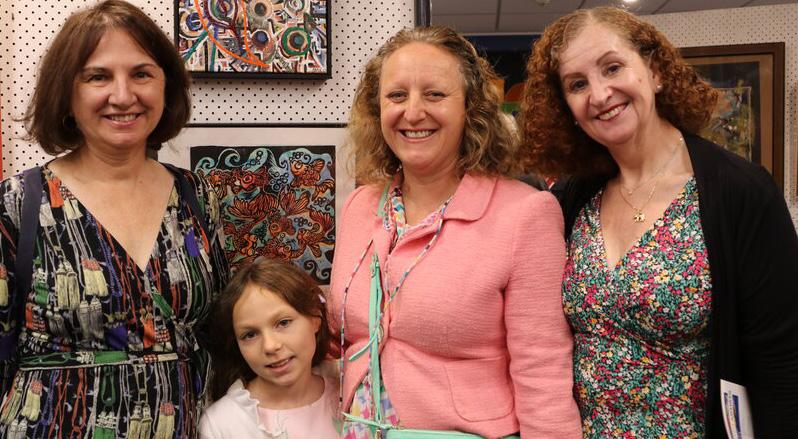

The exhibition, which transformed the Centre into a gallery, was jointly curated by B’nai B’rith’s Vivienne Radomsky and COA’s Sandy Matrai.
Subjects ranged from religious to abstract, in a wide variety of formats, including handcrafted jewellery and paper, sculpture, paintings, drawings, mosaics, 3D printing, quilting,



photography and metal work. The show attracted local Jewish artists of differing ages, backgrounds and proficiencies. The youngest contributor was 17 and the oldest 95.
Every piece of art seen was also available for sale, with the money raised divided between the artists and the hosting organisations. Four pieces were sold before the exhibition opened.

A metal art workshop was facilitated by Peter Rozario, with his “students” enthusiastic and creative.
An artists’ cocktail party gave visitors the opportunity to meet and speak with the contributing artists, many of whom have appeared in previous exhibitions.
Nutritious menu to choose from including meat and vegetarian options prepared by Kosher caterers
Makes preparing food simple for those who can no longer cook a nutritious meal on their own

Delivered by friendly COA volunteers who will pack the meals into your fridge and chat with you at each delivery
• Over forty years experience and over one million meals delivered to our community
Alexa Eden, from AlgoAI, which is creating a new AI dating app, and Aleeza Ben Shalom, star of Netflix’s “Jewish Matchmaking”, weigh in on this hot topic.

First, there was Jdate. Then there was SawYouAtSinai, JWed, and JSwipe. Now, a new Jewish dating app, mujual, will be using sophisticated AI to set up singles with the help of an AI Jewish matchmaker named Lora.
The app, which will be coming onto the market by the end of 2023, works like this: When users start up mujual, Lora greets them and steers them towards potential mates who are the best fit for them. These matches are based on a number of parameters, like personality types and preferences, discussed during the user’s time interacting with Lora. A user’s matches are capped at six per week and when matches are left un-connected, Lora enquires about the connection, hopefully making the match for both parties.
"We are deeply dedicated to making more than matches happen,” said Alexa Eden, humane technologist at AlogAI Tech, the Israel-based non-profit developing the technology.
“We focus on the future by investing our skills, talents and resources into developing relationships from the match to the marriage. Our efforts are focusing on ensuring high quality relationships, compatibility and connections.
According to Eden, most of the team members at AlgoAI Tech used dating apps in the past and became frustrated with them. They didn’t have great experiences swiping to find matches and they hoped to create something better.
“Many users may have a desire to meet someone Jewish, but with limited “Jewish only” platform options and limited compatibility matches users feel overwhelmed with searching in nonJewish spaces, or swiping through subpar matches,” she said. “We’ve instead focused on shifting the user experience to be less about swiping and more about self-discovery in the process of becoming connected with the best compatible matches.”
Mujual combines relationship science, advanced AI and machine learning to make matches. “We’ve taken a deeper look at relationship compatibility and have focused on our efforts and creating matching systems that align people on more than just their interests or attraction,” said Eden. “Instead, we’ve focused on predicting factors of healthy happy relationships between people and built a system to develop these relationships.”
The advisory board for the app includes Shirat Mallach, a couples’ therapist and relationship consultant and Dvir Kahana, former general manager of Israel’s Ministry of Diaspora Affairs, while specialists in deep learning, algorithms and AI make up the nonprofit’s professional team.
“We’re creating high quality compatibility matches for a variety of different dating markets and clients,” Eden said. But what about matchmakers who are hired to do the same? “For those who have opted to work with matchmakers, there is a consistent complaint that matchmakers do not have the time to really get to know singles,” Eden said, stating that they’re just too busy or overwhelmed to make high quality matches.
For Aleeza Ben Shalom, star of Netflix’s hit show “Jewish Matchmaking” and a matchmaker for two decades, AI dating could be a powerful tool for helping people find love. But even with all the data it can collect and analyse, she stressed that there needs to be human

oversight to ensure that the potential benefits are realised and the drawbacks are minimized.
“AI algorithms can only work with the data they are given and if the data contains bias or reflects societal norms and not someone’s true preferences, then the matches made by the algorithm will also reflect those biases,” she said. “This could reinforce existing social inequalities and biases. It's up to developers, users and “yes”, matchmakers, to use AI in a responsible and ethical way across the board.”
With all of its advantages, Ben Shalom says AI dating should also be used with caution. It could raise privacy concerns and increase risks in dating, since people are not always honest or authentic in their online profiles.
“Dating apps and online platforms are also vulnerable to catfishing and fraud, where someone creates a fake profile or misrepresents themselves online for malicious purposes,” she said. “Even someone with the best intentions will have a profile that only provides limited information about them, such as their age, location, and interests.” Ben Shalom is not worried that AI will make her job obsolete. “While AI is likely to automate some jobs and change the nature of work in certain industries, AI is simply not a replacement for human skills, such as creativity, empathy and critical thinking. Matchmaking involves a certain degree of intuition and experience. A matchmaker must be able to read between the lines, understand subtle cues and nuances, and use their experience to make informed judgments about which matches are likely to be successful.”
These intangible and unquantifiable skills will continue to be in demand, said Ben Shalom. They could even increase in demand as AI becomes more prevalent.
“No bot or algorithm will ever replace the experience of working with me,” she said. “I’m not worried at all. And, in fact, I plan to use AI to support the work I do where it’s applicable.”
Even though their approaches may be different, Eden and Ben Shalom are both focused on the same goal: to help Jews find love that will last a lifetime.
“Mujual is a non-profit, funded privately by Jewish donors, as a tool to ensure longevity for the Jewish people,” said Eden. “All proceeds go back, directly, into the development of the product to ensure a clean, ethical directive toward Jewish matchmaking.”

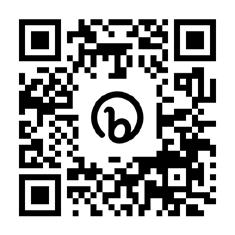
Naale Elite Academy provides fully subsidised, three- or four-year scholarships to Jewish teens seeking high level education in Israel. The program caters to diverse religious backgrounds, offering excellent education in religious and secular studies. Students make lifelong friends and earn an internationally recognised diploma, while gaining invaluable tools for life and a deeper connection to Israel.
Students participating in the program attend schools throughout Israel and make up a small but significant proportion of the student body. Some of Naale schools are religious, single-sex schools, and others are co-educational and non-religious. A few of the schools involved are described below, with the first four having a religious focus.
Shaalvim Yeshiva: Excellence in Torah and general studies in a tranquil environment.
An established boarding school located in Kibbutz Shaalvim, offering a warm atmosphere and a high level of Jewish and secular studies. The school fosters strong connections among students from diverse religious backgrounds.
study in an arts-oriented atmosphere within a religious lifestyle. The school embodies Rav Kook’s vision, offering matriculation tracks in theatre, music, film, dance, plastic arts and highlevel Jewish studies.
Beit Chana for Girls: High standards in Chassidut, along with academic excellence.
Located in Safed, Beit Chana offers a warm and nurturing environment for Chabad girls. The curriculum is designed to integrate Jewish values and the spirit of Israel into students' everyday lives.
Ayanot: A cooperative community where individuality and innovation flourish.
It offers electives, a Hebrew ulpan program, matriculation test preparation and coeducational activities. A large variety of extracurricular activities – such as art, krav maga, mixed martial arts, yoga, meditation, Zumba, volleyball, running and music – is available.
Ulpanat Amana for Girls: Creating future Jewish leaders with a proud religious identity.
Located in the city of Kfar Saba and considered one of the premier girls’ religious schools in Israel, the school provides students with a warm family environment. The staff works with the Naale program to assist girls academically and socially.
Ulpanat Haleli: A world based on a combination of faith, art and deed. Ideal for modern Orthodox girls who want to
Located in Haifa, Technion – a science and technology research university – is a world leading institute dedicated to the creation of knowledge and the development of human capital.
Among its many strengths is the Rappaport Technion Integrative Cancer Center.

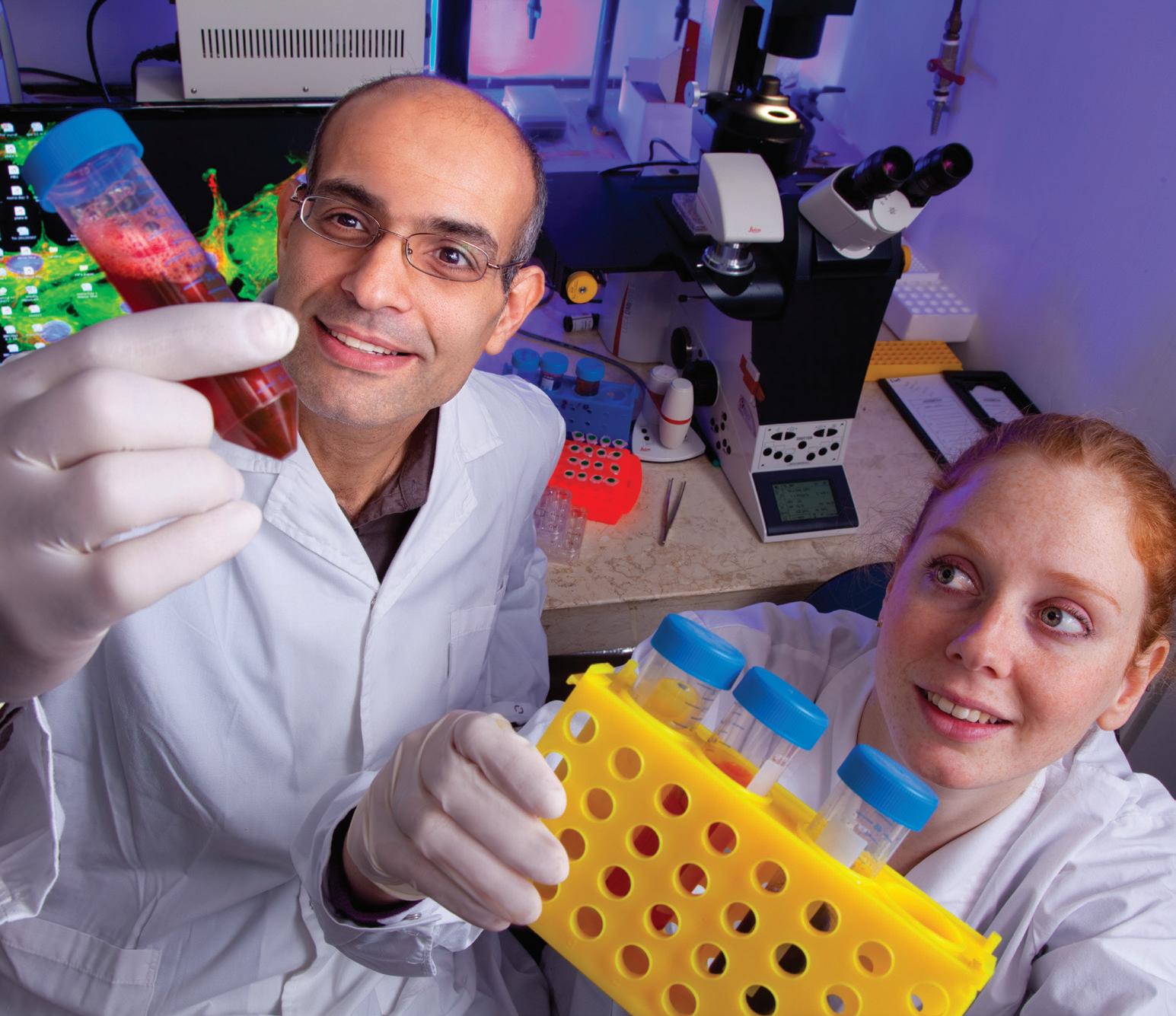
The RTICC brings together more than 75 researchers from engineering, science, and medicine, building interdisciplinary teams of scientists to fight cancer.

The Center is in the throes of recruiting at least two new leaders in the field to enhance an already strong cohort.
The RTICC connects individuals with innovative ideas in the belief that when you bring good people together good things happen.
The Centre provides an environment for its researchers to grow and prosper, to turn their work into life changing treatments for patients.
Cancer aggressiveness and metastasis –where cancer cells spread from the place where they first formed to another part of the body and form a new tumour in other organs or tissues – are the main cause of death from cancer.
Cancer originally stems from a mutated cell, but during treatment many more mutations can develop that make the tumour more aggressive and resistant to treatment.
A growing body of evidence suggests that normal tissue surrounding cancer cells provides a strong basis for the tumour to spread and metastasise.
Some of the factors supporting the resistance of tumour cells to therapy and its spread throughout different organs relate to the fact that cancer cells are varied and constantly changing.
It is the fight looking for answers that Rappaport Technion Integrative Cancer Center is involved in.
Upholding core values of meaningful work, joyful cooperation and boundless creativity. Individual attention and classes with emphasis on academics and farm experiences as well as a special earth sciences track at the prestigious Weizmann Institute. Extracurricular activities are available in sports, art, music, technology and more. Mosenson Youth Village: A multicultural hub where learning is an experience.
Mosenson celebrates diverse backgrounds and integrates students into Israeli society.

Nahalal Youth Village: An exceptional education for exceptional minds. Nahalal is a top co-educational, academic institution for local and international students, training leaders in science, technology, high-tech, medicine, academia and politics. Ideal for gifted students who excel in STEM subjects, it offers a full range of academic subjects, including additional classes in chemistry, physics, robophysics and engineering.
With social interaction and recreational activities, Nahalal accommodates religiously observant students (there is a synagogue, Shabbat services and kosher food), but it is not a religious school.
For more information, contact the Naale Regional Manager Oceania by email: naale.australia@gmail.com or click onto www.naale-elite-academy.com
The world’s most popular doll has a long Jewish history.
In Greta Gerwig’s upcoming movie Barbie, the doll heads out into the real world with her beau Ken on a lifechanging adventure washed in pink.
This ubiquitous plastic doll – with her mountains of accessories, from clothes to cars and even houses – enjoys annual sales in excess of US $775 million. Barbie continues to be in the news: a new version of the doll with Down’s Syndrome, debuted in April 2023, has been a huge hit.
Yet much of Barbie’s history – and the Jewish influences on the toy – remain little known. Here are five Jewish facts about Barbie.
1. Pioneer inventor
When Barbie’s inventor, Ruth Moskowicz, was born in 1916, her family was finally settling down after years of upheaval. Ruth’s father Jacob was from the Russian Empire and like many Jews in Czarist Russia had been drafted into the army. Jews were forced to serve for 25 years, far longer than other conscripts.
Jacob escaped from his unit and boarded a ship bound for America. A talented ironsmith, immigration officials suggested Jacob settle in Denver, where his skills could help build the new railroads. After years of work, he was able to bring over his wife and seven children from Poland. Ruth was born in Denver, their tenth and youngest child.
Ruth met her husband Elliot Handler –another child of Russian Jewish immigrants – at a Jewish dance when they were teenagers. They eventually moved to Los Angeles and experimented with building furniture out of the new plastics that were being invented at the time. Ever the hardnosed businesswoman, Ruth worked as an equal partner with Elliot.
When Elliot was drafted during World War II, Ruth worked to sell plastic items she and Elliot designed under the auspices of their new company, Mattel. After the end of the war, Ruth and Elliot began to shift their manufacturing focus to plastic toys, tapping into the newfound prosperity of peacetime.
While Ruth and Elliot weren’t traditionally observant, their Jewish identity was always central in their lives. As Mattel’s success grew, the Handlers became major philanthropists in Los Angeles, supporting an array of both Jewish and secular causes. “That was our training, our background,” Ruth explained, “the Jewish ethic”.
In her book Barbie and Ruth: The Story of the World’s Most Influential Doll and the Woman Who Created Her (2009), author Robin Gerber describes Ruth’s reaction to the start of the Six Day War in Israel in 1967. Ruth had always been a large donor to the United Jewish Appeal in Los Angeles; when war was declared, she phoned them up and asked what she could do to help. The phones were ringing off the hook. The person answering replied: could she please come down to the UJA offices and help field phone calls?”
Ruth, the president of Mattel, one of the largest companies in the US, had an incredibly busy schedule, yet she dropped everything and raced downtown to field phone calls. Within days, she’d set up an efficient system of answering calls and accepting donations from people who wanted to support Israel’s war effort and returned to Mattel. “That’s what I call public service,” she said. “I felt very good about it.”
loved it. They embraced the adultlooking doll and acted out their own imagined futures while they were playing. Dr Dichter advised Ruth not to market Barbie as a doll, but as a natural extension of girls’ self-expression. Barbie became one of the first toys advertised on television and the term “doll” was barely used. Launched in 1959, Barbie caught on like wildfire. Girls revelled in their new ability to create glamorous make-believe worlds using their new toys. The dolls were unapologetically girl-centric. Mattel launched a male doll named Ken (named after the Handler’s son) in 1961, but he got second billing. In the world of Barbies, girls were allowed to envision adult life with women firmly centre stage.
4. Drawing on the Jewish value of diversity

2. Listening to girls
Barbie’s genesis came one afternoon as Ruth Handler watched her young daughter, Barbara, and her friends playing with paper dolls.
In the 1950s, toy companies primarily made baby dolls for girls to play with. It was naturally assumed that all girls aspired to feed and bathe a tiny baby, and nothing more. There were a few older-looking dolls for sale, but these often looked like giant versions of babies and were more grotesque than glamorous. It took a Jewish mother to observe real-life
looked inappropriate for children. Ruth changed the features, creating a more wholesome-looking doll.
3. Asking girls what they wanted in a toy
This new doll – dubbed Barbie, after Ruth’s daughter Barbara – was so different from anything else in the American market, Ruth wanted to proceed very cautiously. She turned to Dr Ernest Dichter, another Jewish innovator, a psychotherapist from Vienna who’d fled Hitler and moved to New York, for help.
Ruth and Elliot Handler often credited their immigrant Jewish background with rendering them open minded. Having experienced antisemitism, they were determined to see others for who they were, instead of through the prism of harmful stereotypes.
From its beginnings in the 1940s, Mattel resisted the racial segregation that was the norm in other American factories.
The Los Angeles Conference of Community Relations wrote a letter to Mattel in the 1940s, noting that “a tour of your plant is like walking through the United Nations. People of different races, various religious faiths, handicapped people, elderly people all working as a unit. You have set an example that might well be followed by business people everywhere.”
In 1968, Mattel released a Black doll named Christie who was billed as Barbie’s “best friend” and launched another Black doll named Julia the following year. The company released its first Black Barbie in 1980. Today, Mattel sells over 170 different types of Barbie, with varying skin tones and hair colours, allowing children to find a Barbie doll who looks very much like them, if they choose.
5. Drawing antisemitic ire
Ruth Handler passed away in 2002; Elliot Handler died in 2011. Their company, Mattel, went public in 1960. Yet in some quarters, Barbie is still seen as an intensely Jewish toy.

girls and see that they wanted something more.
Barbara and her friends cut out paper dolls from McCall’s magazine and dressed them in delicate paper outfits. Then, they each held up their dolls and made them talk, imitating adult conversations. “I knew that if only we could take this play pattern and three-dimensionalise it, we would have something very special,” Ruth Handler later described.
In 1956, the Handlers took a long summer vacation to Europe and Ruth found the sort of doll she’d dreamt of creating: a German “Bild-Lilli” doll. In the 1950s, these were popular joke gifts across central Europe. Bild-Lilli grew out of an off-colour newspaper cartoon in the Bild-Zeitung newspaper and there was something intensely seedy about the dolls, which were meant to be adult gag gifts given on occasions like bachelor parties. Despite this troublesome connotation, the dolls were well made and came with beautiful clothes. And little girls loved them.
Ruth bought a few to take back home with her. When she suggested creating something similar, her Japanese suppliers were aghast, protesting that the dolls
Back in Vienna, Dr Dichter used to see patients in his office, which was across the street from Dr Sigmund Freud’s. In the United States, he gave up practicing medicine and became an early pioneer of what he called motivational psychology, and what today is more commonly called marketing. Dichter’s genius was in asking consumers detailed questions about what they wanted and how they thought about different products. Previously, it was more common for company chairmen to guess what their customers were looking for.
Dr Dichter leapt at the chance of working with Ruth Handler on Barbie. The field of marketing to children was in its infancy and the adult-looking doll that Ruth wanted to sell was highly unusual. Critics complained that it was inappropriate to give girls adult-looking Barbies. (If Barbie were scaled up to human-sized, she wouldn’t be able to stand up on her undersized feet and would be severely malnourished.) Yet the prototypes were hits with girls.
Dr Dichter interviewed 191 girls and 45 mothers. He found that the mothers uniformly hated the Barbie prototype they were given to review, but the girls
It’s been banned in Kuwait since 1995. Iran tried banning Barbie the following year, and launched their own “Islamic” dolls that they encouraged Iranian girls to play with.
After a few years, officials abandoned their efforts to stop the sale of Barbie dolls in the country. Barbie was banned in Russia in 2002 by President Vladimir Putin, who accused the doll of being Western. In 2003, Barbie was banned in Saudi Arabia for being “Jewish”; Saudi Government officials describe the toy as “Jewish Barbie”.
Yet even in places where it is banned, Barbie dolls are often available for purchase on the black market. Ruth Handler’s creation touches something deep inside girls, as they navigate the world around them through play. There’s much to criticise, including Barbie’s impossibly perfect-looking figure and overly thin physique. But Barbie also allows girls to act out their dreams of becoming women.
With robust sales, an ever-increasing number of variations and a highly anticipated feature film, Barbie – drawing on her Jewish past – has a very bright future.
It started in 2006 with just one couple who needed fertility treatment, but didn’t have the funds to pay for IVF.
Shterny Dadon heard their call and sprang into action. She organised a community event in Sydney, attended by 100 women, which raised enough money to fund one round of IVF. That led to the birth of a baby boy … and so was born the Australian Jewish Fertility Network (AJFN). AJFN is one of only a handful of charities worldwide that offers financial assistance for fertility treatment.
Infertility affects one in six couples and the need for AJFN’s services continues to expand exponentially. It is now more important than ever to do everything possible to ensure that no Jewish Australian ever feels alone on their fertility journey.
From financial assistance to delivering care packs, Shabbat meals, challot and providing access to a group of clinically trained volunteer support companions, AJFN today provides ongoing support to more than 60 families.

Over the past 16 years, AJFN has allocated hundreds of grants for fertility treatments to families that would otherwise not have had that opportunity. That has resulted in the birth of 48 babies.
AJFN chair Kerry Gonski said the organisation is fuelled by the generosity of corporate partners, supporters and volunteers.
“What began as Shterny’s pipe dream has evolved into something extraordinary
Friday, Jun 30, 2023 4:38pm
Shabbat ends, Jul 1, 2023 5:38 pm
Friday, Jul 7, 2023 4:42
Shabbat ends, Jul 8, 2023
Friday, Jul 14, 2023
Shabbat ends, Jul 15, 2023
Friday, Jul 21, 2023
Shabbat ends, Jul 22, 2023
Except where expressly stated otherwise, content in The Sydney Jewish Report is provided as general informations only. The articles in this paper have been contributed by a third party. The opinions, facts and any media content here are presented solely by the author, and The Jewish Report assumes no responsibility for them. It is not intended as advice and must not be relied upon as such. You should make your own inquiries and take independent advice tailored to your specific circumstances prior to making any decisions. We do not make any representation or warranty that any material in the papers will be reliable, accurate or complete, nor do we accept any responsibility arising in any way from errors or omissions. We will not be liable for loss resulting from any action or decision by you in reliance on the material in the papers. By reading the papers, you acknowledge that we are not responsible for, and accept no liability in relation to, any reader’s use of, access to or conduct in connection with the papers in any circumstance. Photographs submitted by individuals or organisations are assumed to be their property and are therefore not otherwise credited. All articles in this paper have received the expressed consent of the author to publish in this paper.
The Jewish Report; ISSN 2204-4639
Publisher: The Jewish Report Pty Ltd (ACN 167302981)
Distributor: TJR Distribution Pty Ltd ACN 165158029
Comments or suggestions to: editor@thejewishreport.com.au
Article submissions to: www.thejewishreport.com.au/article-submission-guidelines
Advertising: editor@thejewishreport.com.au
Website: www.thejewishreport.com.au
Printer: Spotpress Pty Ltd
that will continue to meet the growing needs of our community long into the future,” Ms Gonski said.
In Shterny’s words, “when the community comes together, miracles can happen”.
If you or someone you know needs support on their fertility journey email support@ajfn.org.au or phone (02) 79068366 or (03) 8840 6560.
Otherwise, text 0481 075 554 or go to the website www.ajfn.org.au
The chairman of the Parramatta & District Synagogue, Michael Morris, is among 43 members of the Jewish community nationwide recognised in the King’s Birthday Honours.

Michael received the Medal of the Order of Australia.
He was a cheder attendee at the Parramatta Synagogue and had his bar mitzvah and pre-wedding call up there.
Michael first took a board position in 1981 and his wife Sue has also been a member of the board and of the ladies’ guild.
Michael’s parents were heavily involved in the early years of the shule. They also held board and guild positions.
Michael is the fourth member of the extended Morris family to be recognised with an Order of Australia, the others being Robyn Lenn, Dianne Hirsh and Jeannette Tsoulos.
Pride is about self, not anatomy or sex and that's why the community must stop subjecting the queer people in its midst to fear and shame.
I couldn’t believe what I saw. A mother smacked her son’s hand and, with a look of disgust, threw what he was holding on the floor. The irate mother was not reacting to her son holding a piece of roadkill. Rather, she did this in response to her son holding a Jewish Pride flag at the Celebrate Israel Parade.
Upon witnessing this interaction, as well as other similar ones between parents and children along the parade route, I had several reactions. As a Jewish Queer Youth (JQY) staff person, I felt angry and protective of our vulnerable teens, who often come from families where their queer identities are not accepted. They took the risk to march at a public event with such a significant Orthodox Jewish presence and they deserved to be greeted with encouragement, not scorn. And, as a psychologist, I was acutely aware of the ripple affects this mother’s actions would have. The son surely understood the message loud and clear: queer is bad, icky and something to stay far away from. If this child turns out to be queer, they will likely have a more difficult time understanding and accepting their identity, and they are at increased risk of mental health problems. And, if the child turns out to be straight and cisgender, his mother’s lesson is another thing he will have to unlearn, so that he can be accepting of queer people in his life, who may turn out to be
his children or close friends.
Despite my shock, this mother’s behaviour, while highly problematic, is not entirely surprising given the Orthodox community’s misunderstanding of Pride and queer identity. Because June is Pride month, LGBTQ issues are bound to be discussed in the Orthodox community – whether in sermons, at kiddushes, or during shabbat meals. As such, there is no more opportune time to provide some education about what Pride is and is not, from my perspective as a psychologist.
Let’s start with the basics. Pride literally means “reasonable self-esteem” or “confidence and satisfaction in oneself.” Queer people, particularly those from unaccepting or less accepting environments, such as the Orthodox Jewish community, are highly prone to feeling shame just for being who they are. The manifestations of shame are as diverse as the queer community itself. Whether it’s a gay man who repeatedly makes up stories as to why he isn’t interested in being set up with a woman, or an observant trans person who stopped attending synagogue because of not knowing how they will be received, the day-to-day experiences of many queer people in the Orthodox community can be both fear-laden and shame-ridden.
A common refrain heard in Orthodox spaces regarding LGBQ people is: “Why do you need to tell everyone about your sex life?” This question, almost always rhetorical in nature, reflects a vast overreading of what it means to be openly queer. Identifying as queer is not a declaration of one’s sexual behaviour. Rather, it is a statement of how one sees themself as an individual, given
their communal and social context. For example, we cannot assume that because a man openly identifies as gay, he must be engaged in sexual behaviour with other men. Gay men, like straight men, vary in their sexual practices, anywhere from abstinence to out of control sexual behaviour (sometimes referred to as sexual compulsivity). Rather, it is more accurate to understand a man’s identification as gay as a statement about how he fits into his community and its cultural expectations. In other words, for a man in the Orthodox community, “I’m gay” doesn’t necessarily mean anything more than, “something about me and my experience doesn’t fit with the Orthodox man-and-woman marriage model.”
For trans folks, the focus of faulty assumptions is not about sexual behaviour but is, instead, about a person’s anatomy. To be clear, publicly identifying as transgender does not indicate anything about the person’s anatomy. Some trans people take hormones, some undergo one or more surgeries, some do both and some do neither. For a trans person in the Orthodox community, coming out doesn’t necessarily mean anything more than “my gender identity doesn’t correlate with my sex assigned at birth and as such my experience of the Orthodox gender binary is complex.”
Being queer in the Orthodox world is not only complicated and challenging but also fraught with opportunities for being misunderstood, invalidated, rejected, oversexualised and seen as “other”. Pride is the queer community’s intentional effort to counter the psychological effects of these communal realities. We wear rainbow
gear, fly colourful flags, and apply glitter – all to feel positively about who we are and reaffirm our worth as people and Jews in the Orthodox community who deserve dignified meaningful lives. Pride is the queer community’s annual vacation from shame and it is welldeserved.

The mental health statistics for queer youth are quite alarming. According to data from Adolescent Behaviours and Experiences Survey (ABES), released by the Centers for Disease Control and Prevention, gay, lesbian and bisexual youth are more than twice as likely to report depressive symptoms, more than three times as likely to have seriously considered suicide and more than four times as likely to have made a suicide attempt within the 12 months prior to their participation in the study, which was conducted during the pandemic. And trans youth fare even worse. A study published in the Journal of Adolescent Health showed that trans and nonbinary youth reported significantly higher rates of depressed mood, seriously considering suicide and suicide attempts compared to cisgender queer youth. And, coming from a rejecting family is a risk factor for depression and suicide attempts amongst other health outcomes.
So, the next time the subject of Pride or queer outness comes up in synagogue, at the shabbat table, or at a parade, please remember that they are rooted in mental health. Pride isn’t about anatomy, surgery, or sex; it’s about self.
Dr Jeremy Novich is the psychologist at Jewish Queer Youth, an organisation that supports and empowers LGBTQ youth, aged 13-23, from Orthodox, Hasidic and Sephardic homes

In a short while, we will mark the Fast of 17th Tammuz on our lunar calendar. This commemorates the breach of the walls of Jerusalem before the devastating destruction of the Second Temple, along with many other tragic events that occurred on this date.
It also marks the beginning of a threeweek mourning period leading up to Tisha B’av. On the 17th of Tammuz, we abstain from all physical nourishment from sunrise to sunset and the shades of light and darkness in between are truly reflective of our lived experience as Jews across millennia.
Undoubtedly, it is a sobering time and a book that underscores all of this was written by the respected and revered Simon Wiesenthal. He was a Jewish Austrian Holocaust survivor who became famous after World War II for his work as a Nazi hunter, pursuing war criminals in a heroic effort to bring them to justice.
One of my rabbinic colleagues described his tome, “Everyday Remembrance Day; A Chronicle of Jewish Martyrdom,” as one of the saddest books ever written. Within he systematically presents a chronicle of
Jewish history serving to remind readers how easily prejudice descends into forms of aggression.
It is a chronology of testing tragic events occurring daily throughout Jewish history. Over the last two thousand years we have added a lot of sad days to our calendars from events that took place all over Eastern Europe to the Middle East, to across the globe. Yes, Jews have suffered.
Deep breath – thankfully, it is not all doom and gloom and we have steered down a positive path relatively recently.
Two new Jewish holidays were added to our calendar: The first, the fifth day of Iyar, meaningfully marked the 75th anniversary of the re-establishment of the State of Israel. The second is Friday the 28th of Iyar, which is Yom Yerushalayim. It was on this day 56 years ago that Israel emerged victorious against the Arab armies that sought to destroy it during The Six Day War.
On this day the holiest site of the Jewish people, the precious land on which Jews had inhabited since time immemorial, was recaptured.

With the frenetic pace of daily life, it is fair to say that we sometimes take for granted the benefits of living in a country that is governed democratically with freedom of expression and freedom of religion. This is a unique period in world history when almost all Jews, wherever they reside, are mostly free to practice their Judaism how they choose.

Of course this has not always been our reality. Since the destruction of the Temple, Jews have been periodically exiled and consequently forced to move from country to country, most often on high alert facing discrimination and persecution. Frequently, the bestcase scenario was that Jews were treated as second class citizens under the benevolence of a Muslim or Christian ruler who at any time could turn against them and often would.
Don Yitzchok Abarbanel was one of the great Jewish scholarly statesmen who undoubtedly played an important part in European history. He was favoured in the court of King Ferdinand and Queen Isabella of Spain, who early in their reign, were even considered benevolent to their Jewish subjects. Yet, that did not stop them from expelling all Jews from their realms on Tisha B’Av, 1492 in one of the most tragic events in our history.
Sadly there have been so many. In regard to the persecution of religious practice, one of the darkest times was during the Soviet era. For seventy years the Communists repeatedly attempted to extinguish the flame of Judaism. Yet this was ultimately futile. The primary reason they did not succeed was due to the bravery and perseverance of Rabbi Yoseph Yitzchak Schneersohn OBM, the sixth Lubavitcher Rebbe.
While others attempted to flee, he remained in Russia and made a pact with ten of his most senior Chassidim. They were united in their determination to continue teaching children, building Jewish ritual bathhouses, mikvaot, and
fulfilling the spiritual needs of all the Jews of the Soviet Union, even at the cost of their lives. Tens of millions died under Stalin, tragically many of them the disciples of Rabbi Schneersohn.
For his covert Jewish activities, he was arrested and sentenced to death, but after diplomatic interventions from Latvia (then a significant trading partner with the USSR) and the USA, his sentence was commuted. During his incarceration, there were a number of now well-known incidents, during which when he bravely stood up to his oppressors.
One of the most famous was that while he was being interrogated, he refused to divulge any details of his underground
From a historical perspective, what transpired regarding Jerusalem in 1967 was not the first time that it had been conquered. It had previously been vanquished by the Canaanites, Babylonians, Persians, Greeks, Romans, Christians, Muslims the Ottoman Empire and then by the British.
How did these countries and empires acquire Jerusalem? Waging wars, where they one by one emerged victorious. We persevered, we were patient and over half a century ago … success.
And yet, astonishingly the following did not occur in history yet now that Jerusalem is ours, we are consistently being accused that is it occupied with ongoing requests to divide and redivide.
Consider the following: for over two millennia Jews in every generation pledged: “If I forget thee old Jerusalem let my right hand wither.” Jerusalem is mentioned 750 times in our Bible (and not once in the Quran). For us, it is our one and only beating heart.
Appreciating that the calamities have been colossal, we must also recall the wise words of King David (Psalm 128): “May the LORD bless you from Zion; may you share the prosperity of Jerusalem all the days of your life, and live to see your children’s children. May all be well with Israel!”
From sunrise to sunset we all offer a thankful and hearty ‘Amen’ to that!
educational network. An officer drew his gun, tauntingly waved it in the Rebbe’s face and said, “You see this toy. It has made many a prisoner talk”. The Rebbe responded, “Only a person who believes in one world and many Gods is fearful of the gun; one who believes in only One G-d and two worlds has no fear.”
Eventually he was released on the 12th Tammuz, almost one century ago. However the Soviets forced him to leave the USSR and eventually he made his way to the United States where he initiated the emissary and educational network for which Chabad has become synonymous with world-wide.
During the 70 years of Communist rule and under the leadership of his successor, Rabbi Menachem Mendel Schneerson OBM, Chabad kept the spark of Torah Judaism alive with a clandestine network of teachers, shochtim, ritual slaughterers for kosher meat, and mohalim, those who performed at circumcisions. With the dissolution of the USSR, Chabad emissaries very quickly returned to that region, many of which are now flourishing centres of Torah education.
Rabbi Schneerson often spoke about his predecessor’s iron will, reflecting that nothing would stand in the way of his mission to spread Judaism, not even the might of the Soviet Union. Each one of us can learn from his actions. If we are ever faced with a challenge or test in relation to our Judaism, we must stand strong and resolute with faith and fortitude, and Hashem will enable us to withstand any and every obstacle.

A declaration of shared values, a research data base and a “diversity minyan” system were among the suggestions made by Australian delegates for a new Global Jewish Council.
The Australian consultation for a global project to improve Israel-diaspora relations was held in Melbourne earlier this month. Ninety-one delegates from Australian Jewish organisations in four states attended the consultation, which is part of an Israeli presidential initiative to create a Global Jewish Council.
The consultation day was one of 15 such sessions being held globally, as part of Kol Ha’am-Voice of the People, an initiative by President Isaac Herzog to create a “Jewish Davos” – a collaborative forum for Jewish representatives from around the world.
In a recorded message to Kol Ha’am delegates, President Herzog expressed his deep concern about the growing rift between Israel and the Diaspora. “Not only are we agreeing less and less, but we seem to be losing the ability to talk to one another. We need a place where we can come together and listen to one another,” he said.
Delegates identified antisemitism, intermarriage, assimilation, connection/ division, continuity and education as the key issues confronting the Jewish people.
But there was also hope. “We have so much to be grateful for and so much to be proud of. We are a thriving and accomplished people, connected by ties – historic ties, religious ties, family ties – that stretch across the globe over millennia,” President Herzog said.
Zionist Federation of Australia President Jeremy Leibler said he was proud of the strength and diversity in the room.
He cited the results of Crossroads23, the survey conducted by Plus61J Media in the lead-up to the conference as evidence of a sophisticated community that cared about Israel, even as it expressed concerns about Israeli policies.
“The recent survey conducted by Plus61J demonstrates that on almost every metric, the Australian Jewish community’s connection to Israel is stronger than it was in 2017. It also demonstrates that our Jewish identity has depth and sophistication, such that our connection to Israel remains strong, regardless of whether we agree or disagree with the policies of the Israeli Government of the day.”
Most of the day was spent in working groups discussing what a Global Jewish Council would look like, what it could reasonably be expected to achieve and what challenges it would face.
Ideas suggested by delegates included:
• A declaration of shared values between Israel and the diaspora, an idea one delegate called a “Declaration of Interdependence”;
• A research data base that would provide shared data for the global Jewish community;
• A requirement for diversity within projects and committees, so that different streams of Judaism and different geographical areas were represented –a concept one delegate called a “diversity minyan”;
• Training in consensus building and conflict resolution; and
• A Respect Code for discussions that delegates would be required to sign.
Key criteria agreed on by the delegates were:
• The need for transparency;
• The need to balance diversity with the desire for consensus and a unified voice; and
• The importance of an iterative cycle, with measurable goals and impacts.
JEWISHCARE
With an increasing desire amongst older Australians to stay in their own homes as they age, the need for quality home support has become more critical than ever. According to the Royal Commission into aged care, 80 percent of Australians express their preference to stay at home for as long as possible. To meet the needs of the ageing members of our community, organisations like JewishCare support people to continue to live active and fulfilling lives at home.
Recent research conducted by the Australian Institute of Health Innovation at Macquarie University underscores the critical role of home-based support in promoting healthy ageing. The study reveals that each additional hour of service received per week is linked to a six percent decrease in the risk of transitioning into permanent care. These findings emphasise the tangible benefits of having someone assist with household chores, transportation and personal care needs.
Bronwyn Elbourne, Head of Community Aged Services at JewishCare, speaks passionately about home support. “We firmly believe that by providing comprehensive care and support services to older individuals, we empower them to lead socially,


emotionally, physically and culturally fulfilling lives in their own homes,” Ms Elbourne said. “Our aim is to maintain their independence while meeting their unique needs."
In the recent Aged Care audit, JewishCare met and was recognised as compliant with all eight stringent quality standards. This accreditation highlights the organisation's commitment to providing quality care and service delivery to its aged care residents. Its aged care services team is dedicated to helping its aged clients with their
immediate needs and those that may arise in the future, with a cultural understanding of the community at the heart of everything it does.
Miriam Liberman’s mother, Golda, was a long-standing client of JewishCare and said home support had a lifechanging impact on her mum. “Through the amazing help of family, Jewishcare’s home support and a private carer, my mother continued to live a fulfilling life as she aged, Golda said. “She continued swimming, attending art classes and socialising – staying the dynamic and
There was also considerable frustration and scepticism expressed. At the beginning of the day, participants were asked to rate their attitude to the likelihood of success on a 1-10 scale and averaged 3.8.
Some delegates pointed out similar presidential initiatives had been tried before.
There were fears a Global Jewish Council might be “just a talkfest”, designed to act as a release valve for Diaspora frustrations with Israel, without providing any genuine change.
Others felt a council would inevitably become factionalised and divided and would be no different to the existing World Jewish Congress and World Zionist Organisation.
Facilitator Rami Argov, from Deloitte Tel Aviv, said this was only the beginning of a process. Results from the 15 international labs will go to the President’s Office and the results will be fed back in a report to global communities.
“I appreciate not only you taking part, but also you being brutally honest with us. You are similar to Israelis in your brutal honesty, the cynicism you have shared with us and also how much this is important to you,” he said.
unique person she had always been, even when going through physical and cognitive changes that come with having dementia. Without this support, mum would never have been able to stay at home.”
As the demand for home-based care continues to rise, JewishCare remains committed to fostering healthy ageing and enabling older Australians to age well in their own homes.
To find out more, go to https://jewishcare.com.au
Natalie Levy, the talented and creative founder of KA-certified Sweet As Funk, has been selected as one of the contestants on the popular TV show The Great Australian Bake Off. The airing of Season 6 commenced this month and this innovative series follows the culinary journey of one dozen home baking enthusiasts as they are put through a set of challenges - including working with both familiar and unseen recipes. Throughout, they reveal their innate artistry and innovation along the way.
Natalie Levy shares that her strong Jewish heritage was a powerful and positive influence on so much of her baking throughout the show and sweetly reflected that she was as "proud as Pavlova” to have been selected. For her, it was undoubtedly an opportunity to learn and grow professionally with her baking encouraged and critiqued by world-class chefs.
For this edition, Natalie Levy has generously offered to share one of her treasured dessert recipes with readers of the Sydney Jewish Report. Our entire community is so proud of her achievements – we have been collectively schepping nachas and

loved her culinary journey on Foxtel and of course, throughout every single day as one of our valued local KA-certified caterers.
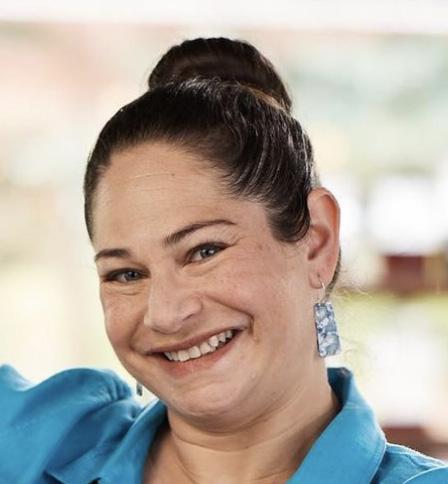
Enjoy every morsel of this terrific treat.
CAKE INGREDIENTS
1 ¾ cups self-raising flour
1 ½ cups sugar
¾ cup unsweetened cocoa
1 teaspoon salt
2 large eggs
1 cup buttermilk
½ cup vegetable oil
2 teaspoons vanilla extract
1 cup boiling water
CHOCOLATE MOUSSE INGREDIENTS
280g dark chocolate, finely chopped
2 ½ cups heavy cream
1 tspn vanilla extract
¼ cup icing sugar
CHOCOLATE GANACHE TOPPING
INGREDIENTS
170g dark chocolate, finely chopped
¾ cup heavy cream
METHOD
Preheat your oven to 175°C. Grease and flour two 9-inch round cake pans. Beginning with the cake ingredients, in a large mixing bowl, combine the self-raising flour, sugar, cocoa and salt. Mix well.
Add the eggs, buttermilk, vegetable oil and vanilla extract to the dry ingredients. Beat on medium speed for 2 minutes. Stir in the boiling water, which will make the batter a thinner consistency.
1. Red – Yam Suf is the Biblical name for the Red Sea
2. The Embassy of the United States of America
3. Arabella
4. Two days. The letter was dated November 2, 1917
5. Member for Berowra
6. The Grace After Meals
7. c) 1910
8. b) Rav Nachman of Breslov
9. Mikhail Gorbachev
10. 11th Century CE
11. Phil Spector
12. Song of Songs (Shir HaShirim), Proverbs (Mishley) and Ecclesiastes (Kohelet)
13. Sara Schenirer
14. Avraham Fried
15. The 1920s
16. 7 years (Operation Moses took place in 1984, Operation Solomon was in 1991)
17. ... after the establishment of the State of Israel
18. Menachem Begin and Ariel Sharon
19. He was born on February 13, 1944, in the London Underground station of Highgate while the station was in use as a shelter from German bombing during World War II
20. Yeshiva University
21. Gateshead
22. They both journeyed into space. Volynov was chosen as one of the Soviet Union’s inaugural cosmonauts and flew into space in 1969. Ilan Ramon became the first Israeli astronaut, when he went into space in 2003. Tragically he and the six other crew members were killed when the spacecraft Columbia disintegrated during re-entry.
23. a) Afula
24. Moses
25.
a) Paul 6th
b) John Paul II
c) Benedict 16th
d) Francis
Jewish answer – MOSHIACH (also spelled MASHIACH). Here is a list of some common words (“yes”, we know there are more words in the dictionary that can work, but these words are common to today’s vernacular):
ACHIM, AMASS, AMISS, CHACHAM, CHACHMA, CHAMSA (HAMSA), CHAMSAS, CHASM, CHASMS, CHIASM, CHIASMIC, CHIASMS, COMAS, COMMA, COMMAS, COMIC, COMICS, COSMIC, COSMOS, IMAMS, MACHISMO, MACHO, MAMAS,
MAMMASH, MIMIC, MIMICS, MISHMASH, MOCHA, MOCHAS, MOOCH, MOSAIC, MOSAICS, OSMOSIS, SCAMS, SCHISM, SCHISMS, SHAMMASH, SIMCHA, SIMCHAS, SHAMS, SMASH, SMICHA, SMOOCH and SMOOSH.
Questions/comments/compliments, please email Yoni at koshercrosswords@gmail.com
Pour the batter evenly into the prepared cake pans. Bake for 30 to 35 minutes, or until a toothpick inserted into the centre of the cakes comes out clean. Remove from the oven and let the cakes cool in the pans for 10 minutes. Then transfer them to a wire rack to cool completely.
To make the chocolate mousse, place the chopped chocolate in a heatproof bowl. In a small saucepan, heat 1 cup of heavy cream over medium heat until it begins to simmer. Pour the hot cream over the chopped chocolate and let it sit for one minute. Stir the mixture until the chocolate is completely melted and smooth. Let it cool to room temperature.
In a separate bowl, whip the remaining 1 ½ cups of heavy cream until soft peaks form. Add the icing sugar and vanilla extract and continue whipping until stiff peaks form.
Gently fold the whipped cream into the cooled chocolate mixture until well combined. Refrigerate the mousse for about 30 minutes so it firms up slightly.
To assemble the cake, place one cake layer on a serving plate. Spread a generous amount of chocolate mousse over the cake layer. Place the second cake layer on top and cover the entire cake with the remaining mousse. Smooth the top and sides with a spatula.
For the chocolate ganache, place the chopped chocolate in a heatproof bowl. In a small saucepan, heat the cream over medium heat until it begins to simmer. Pour the hot cream over the chocolate and let it sit for a minute.
Stir the mixture until the chocolate is completely melted and smooth. Let it cool for a few minutes.
Pour the chocolate ganache over the top of the cake, allowing it to drip down the sides. Use a spatula to smooth the ganache over the top of the cake. Refrigerate the cake for at least 2 hours, or until the mousse is set and the ganache is firm.
When it comes to decorating this delicious cake, the options are endless. I tend to use whipped cream, fresh berries, segmented or caramelised oranges pieces or chocolate shavings.
To place an order for Natalie Levy’s artisan Sweet As Funk products visit www.sweetasfunk.com or call 0407 441 474. Follow sweet_as_funk on Instagram and also on Facebook too.
The KA has so much kosher news to share this month. From wellness products to sweet and savoury treats, we also bring news about convenient kosher hamper options that are just a click away.
Let’s begin by sharing that a brand new product has just been added to the KA-certified range at Comvita. Introducing Comvita Children's Olive Leaf Extract. This is freshly grown, harvested and extracted on its specialist farm in Queensland and is suitable for children over the age of two years old. The unique Comvita method has been operational now for over two decades and protects the naturallyoccurring olive leaf polyphenols from farm to shelf.
You can take Comvita Olive Leaf Extract for everyday antioxidant support & general wellbeing. It is traditionally used in Western Herbal medicine for immune support and also to relieve symptoms of coughs, so perfect for this time of year. This product is sugar free and the Children’s version has a Mixed Berry flavour and does not require our KA logo on the packaging.

Our KA-certified Comvita adult product range also includes liquid only Olive Leaf extract in four flavours: mixed berry, original, peppermint and cardiovascular support. In addition, a range of Manuka honeys are also available that have been produced in New Zealand including raw, wild and unpasteurised.
In the spirit of wellness, The KA is pleased to welcome Pure Product Australia into our KA Family of

appeal – it truly is the highest standard of kosher gifting for any personal occasion along with unique offerings curated for the festivals.
• Cadbury Caramilk Wallaby Sharepack 12-pack is acceptable (Dairy, not CY, certified by Kosher Australia)
companies. It offers a wide range of high-quality professional athletic supplement products which have been created to support your health and well-being at affordable prices. A team of experienced food technologists has supervised the manufacturing at every stage from development to production. All products are free from added sugars, artificial colours, flavours, sweeteners and preservatives.
There are now over 40 products that are all Pareve and KA-certified and these include a vegan protein powder, pea protein isolate, a preworkout flavour in lemon, orange and watermelon and even a testosterone booster powder (150g lemonade) and so many more.
The KA is pleased to advise that The Kosher Hub is now operational and selling gourmet kosher hampers that can be sent to any location in Australia. The Kosher Hub team has a deep passion to curate extraordinary kosher gifts that beautifully reflect the customs of our vibrant Jewish culture. Within you will find kosher wines, gourmet treats and other delightful indulgences. Each gift hamper is handcrafted and then presented with astonishing aesthetic
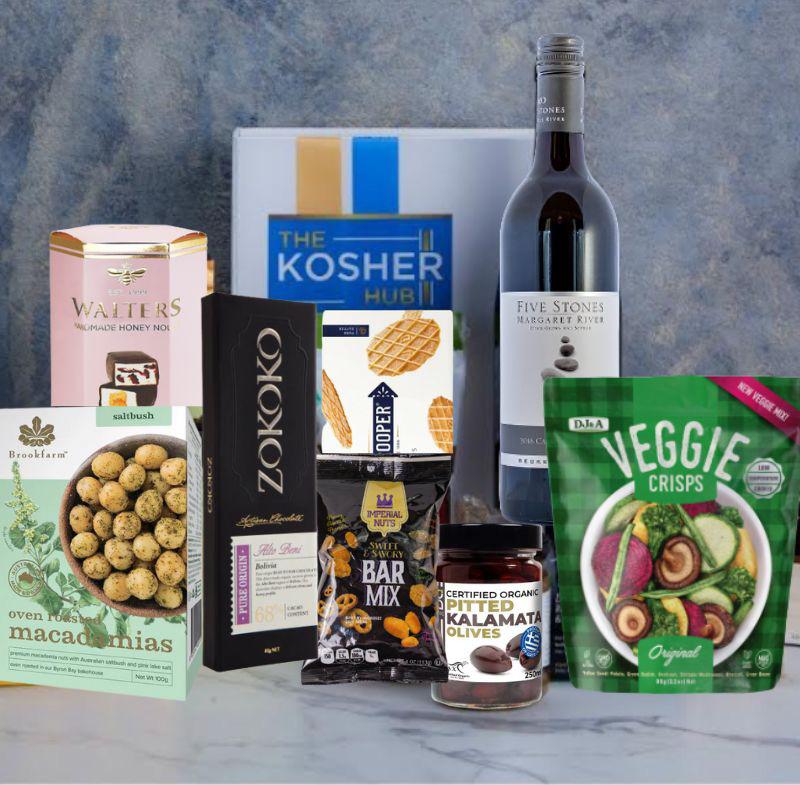
Mendy’s is now offering a generous Shabbat entrée box which includes a selection of popular items. It include a variety of eight fish balls, eight pieces of fried fish, a bowl of potato salad, baba ganuj, hummus, eggplant relish, mock liver, pickled cabbage salad and marinated Kalamata olives. All are also welcome to order three varieties of Pareve kugels: potato, zucchini and Yerushalmi. This is sure to be loved by so many around warm Shabbat tables here in Sydney.
KA-certified Patisserie le Marais has been running incredibly successful baking classes and a new initiative, the ‘Big 4 Pastry Series Course’ is about to commence over four consecutive Mondays beginning July 31. Over the course of four weeks, you will master the art of macarons, puff pastry, choux pastry, and tarts, honing your abilities in each area. Don’t miss this opportunity to elevate your baking skills – you will master the art of crafting these mouthwatering delights.
The KA appreciates the weather is cool right now, but it is always the right time to talk about sorbet and ice cream – in that spirit, we are excited to share that new Pareve sorbet flavours are in production at Alpino Gelato and we will reveal them very shortly.
Also, on behalf of our entire community we want to wish Natalie Levy, owner of KA-certified Sweet As Funk a huge mazel tov for her journey on the hugely popular show The Great Australian Bake Off – her creative and culinary talents are beyond exceptional. Kol Hakavod!

• Four KA-certified Village Finest Kosher Butcher products are now offered at IGA Rose Bay. These include: Minute Steak, Grilling Sausages, Beef Mince and Scotch Fillet.
• To place an order for the Mendy’s Shabbat Entrée Box available every Friday, pre-order by Thursday at 10am and send an SMS to 0402 534 053.
• Rimon Catering has added a new product due to popular demand. You can now purchase Fried Rice & more products will be added shortly. Visit: www.rimoncatering.com.au.
• To order KA-certified Comvita products, visit www.comvita.com.au or purchase from Coles, Woolworths, pharmacies or selected health stores.
• The KA’s Rabbinic Administrator, Rabbi Moshe D. Gutnick, will be one of the guest speakers at an upcoming Winter Shabbaton Getaway in the Blue Mountains for families of all ages during the month of Elul. For more information call Daniel Yesgar on 0402 188 971.
• Twinings French Earl Grey tea (with a hint of vanilla) is acceptable
• Coles Bakery Pancakes (5-pack) at Westfield Bondi Junction are now KAcertified
• All plain, unflavoured teas at T2 are acceptable
• Mendy’s offers 9-inch mini pizza bases (can be pre-ordered)
• Impossible Beef Made From Plants and Burger Patties are acceptable with an OU logo
• Kura Certified Organic Sweetened Kinako and Matcha Powder are now both KA-certified
• Four Leaf Barley Flakes, Muesli, Wheat Free Muesli, Wheat Free Porridge, Tender Rolled Oats are all available in 800g, all KA-certified (entire listing found within KA Directory)


• Alpino Gelato Mixed Berry Sorbet – some tubs have been incorrectly labelled with a KA-Dairy logo – this product is Pareve and corrective action has been taken
• Farex Baby Rice Cereal was previously Pareve and is now certified Pareve made in Dairy Vessels
• Dairy Farmers Condensed Milk is no longer produced
• Paris Creek Farm Caffe-Latte and Choco-Lat are both no longer produced

• CO YO Honey Organic Coconut Yoghurt and Strawberry Organic Coconut Yoghurt are both no longer produced
• Bakers Oven Crumpets and Splits are not acceptable
• Tea Blossoms Fruit Tea & Velvet Mint Tea are no longer certified. Already purchased stock may be finished
• Vegetarian Food: Impossible Chicken Made From Plants not acceptable
• To place an order with The Kosher Hub, visit www.thekosherhub.com.
• The entire KA-certified range from Pure Product Australia is listed with our KA Directory. Visit www.pure-product.com to purchase (keep your eye out for ‘Today’s Deals’ on the website where products are routinely discounted)
Mads Mikkelsen feels at home as the Nazi supervillain who will stop at nothing to gets his hands on the relic.
Indiana Jones and the Dial of Destiny is a fitting tribute to one of the greatest action heroes of the big screen. The ingredients that made this blockbuster series so watchable are back with a vengeance.
To see Harrison Ford return in one of his most beloved roles is terrific.
He first played Indy in 1981’s Raiders of the Lost Ark and last donned the fedora in 2008, in Kingdom of the Crystal Skull.
This time around, technology has allowed him to be de-aged, from the 79-year-old he was when he shot Dial of Destiny, to 37 at the start of the picture.
It is the war years and a nimble-footed Indiana Jones just manages to escape the evil clutches of the Nazis, who have purloined a surfeit of invaluable antiquities.
Much interest lies in an extremely rare artefact known as the Archimedes Dial, a device that purportedly holds the power to locate fissures in time.
Most keen to get his hands on it is Nazi Jürgen Voller (Mads Mikkelsen).
Then we cut to 1969.
Having spent more than a decade teaching at New York’s Hunter College, esteemed professor of archaeology Jones is preparing to retire to his modest apartment.
But everything changes after a surprise visit from his estranged goddaughter Helena Shaw (Phoebe Waller-Bridge).
She is seeking the half of the Archimedes Dial that her father, Basil (Toby Jones), entrusted to Indy years earlier.
An accomplished con-artist, Helena steals the device and makes a swift exit to sell the treasure to the highest bidder.
Left with no choice but to go after her, Indy dusts off his hat and leather jacket for one final ride.
At the same time, Indy’s old nemesis, Voller – now working as a physicist in the US space program – has his own plans for the artefact.
In fact, it is a horrifying scheme that could change the course of world history.
There is a lot to enjoy and appreciate about Indy 2023.
It is so exciting to see Harrison Ford as the action hero – fisticuffs and all – that he was in his prime. He doesn’t put a foot wrong.
Phoebe Waller-Bridge impresses with her “go getting”, if shady persona, never taking a backward step as Helena.
In the vein of Bridesmaids, No Hard Feelings is a coming-of-age comedy that capitalises on the awkward.
Maddie (Jennifer Lawrence) is a 32-year-old whose life doesn’t seem to be going anywhere.

When her mother died, she left Maddie the house (dad is not on the scene), but Maddie is struggling to pay the bills and appears scared of commitment.
In fact, her ex-boyfriend – in doing his job – has just come and repossessed her car, which makes getting around and going to work difficult for Maddie.
Then, her best friend, Sara (Natalie Morales), spots an unusual ad on an app.
A wealthy couple – Allison (Laura Benanti) and Laird (Matthew Broderick) – is offering a used car in exchange for educating their son in the ways of the world. They are looking for someone who can bring their 19-year-old virgin son Percy (Andrew Barth Feldman) –whose social skills are wanting – out of his shell.
As Percy has been accepted into Princeton, they want him to be prepared for college.
While Allison and Laird advertised for someone in their early to mid ‘20s, Maddie – who is desperate for vehicular transport – convinces them that she is the right fit.
Not surprisingly, Allison and Laird don’t want Percy to find out what they are up
to. Unlike Percy – who works in an animal shelter – Maddie is far from shy and sets about her task with gusto.
Percy is shell-shocked and doesn’t know what to make of, or how to handle, Maddie’s advances.
Many awkward, embarrassing and hilarious moments follow.
John Rhys-Davies makes a welcome return to the franchise, bringing good natured warmth and respect to his reappearance as doting Indy supporter Sallah.
Toby Jones is noteworthy for his cowardly representation of Indy’s WWII colleague Basil.
Ethan Issidore makes a good fist of his role as Helena’s agile, nimble fingered young protégé, Teddy.
And it is nice to see Karen Allen back –albeit briefly – as Indy’s wife Marion.
I loved the production design, particularly the attention to detail in the sets and settings.
Notwithstanding some surprising moments though, the film becomes quite convoluted and, at two hours and 34 minutes, Dial of Destiny is bloated.
Prudent pruning would certainly have been in order, to produce an even more compelling finale.
Nevertheless, overall, the direction from co-writer James Mangold (Ford v Ferrari) is sound and the film should prove a fan favourite.
Rated M, Indiana Jones and the Dial of Destiny scores a 7½ out of 10.

The two clearly have feelings for one another, but then the inevitable happens and they are left to try to pick their way through the mess.
Written by John Phillips (Dirty Grandpa) and director Gene Stupnitsky (who cowrote and directed Good Boys), No Hard Feelings is an enjoyable romp.
The pair has crafted a pleasurable lowbrow script, in which the sexual humour is palpable, but there is also warmth.
The often-pointed language used is what gives the movie its bite and spice – of course aided by the performances.
Lawrence shows how adaptable she is as an actor, with a standout comedic turn.
Andrew Barth Feldman proves her suitable antithesis as the intelligent, nerdish “kid” who has his eyes opened.
There is also joy in watching Matthew Broderick and Laura Benanti as helicopter parents.
Among the film’s other highlights is watching Natalie Morales and Scott MacArthur, who plays Allison’s husband Jim, interact. Theirs is a love/hate relationship.
I also appreciated the work of cinematographer Eigil Bryld (In Bruges). No Hard Feelings ticks many of the right boxes and deserves box office success.
Rated MA, it scores a 7½ out of 10.







